How to Build a Patio Sofa
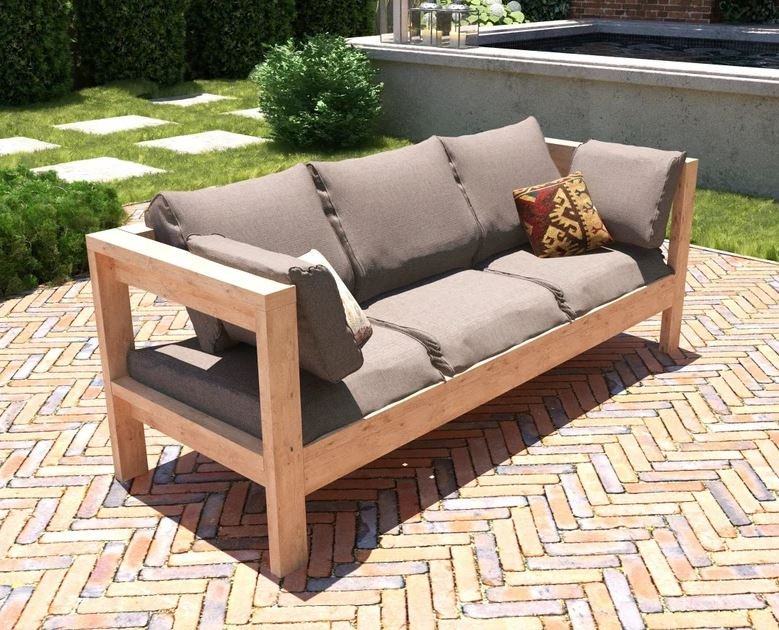
Note: All projects performed following instructions found on this site are done at your own risk. Learn more
The construction of this patio sofa is simple. It has a beautiful style that suits your living space. The screws we will use will provide durability.
Building this patio sofa will be both funny and budget-friendly.
Please read carefully to learn how to make a patio sofa. In this plan, you will have patio sofa plans, dimensions, and detailed instructions.
Please review them carefully so you will understand when to cut and organize the pieces.
The patio sofa-building process starts with legs and supports.
Hardwood or pressure-treated boards are a popular choice, as well as cedar and cypress.
Pressure-treated timber is less stained, durable, and budget-friendly.
1) Starts by checking the list of tools to use for your DIY patio sofa. After collecting the missing tools, focus on purchasing materials.
2) Measure and cut all the pieces and prepare them. Measure the length twice before doing your cuts. Make sure to label each one.
Tips: Drill pilot holes in wood pieces using a power drill for easy connections.
3) Follow the project details for assembling the wood pieces.
4) We will use 2", 2 1/2", and 5" thin wood screw 2", 2 1/2", 5" thin wood screw and optional 2 1/2'' Kreg Jig screws
5) You will secure use wood glue to the contact surface.
6) Fill any gaps and frame nail holes with wood putty.
7) Sand the entire Project with 150-220 grit or more sandpaper and dust pf before painting or staining your finished Project.
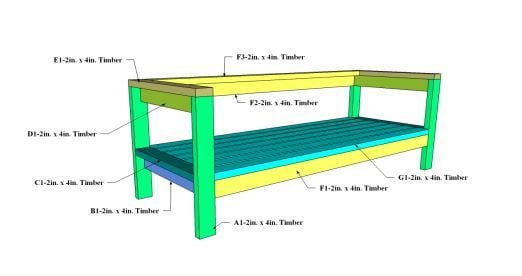
Cut List
A1 - 4 – 2 x 4 x 27″ legs 9'
B1- 5 – 2 x 4 x 25 1/2″ lower support pieces between legs 10' 7 1/2''
C1 - 2– 2 x 4 x 25 1/2″ middle support pieces between legs 4' 3''
D1 - 2– 2 x 4 x 25 1/2″ upper support part between legs 4' 3''
E1 - 2– 2 x 4 x 28 1/2″ upper right and left parts 4' 9''
F1-F2-F3 4– 2 x 4 x 72″ front and back support parts between legs 12'
G1 - 7– 2 x 4 x 72″ sitting boards 42'
Total: 2x4x86' 10 1/2''
List of tools:
- Tape measure
- Saw
- Drill, nail gun
- Countersink drill bit
- Wood glue
- 2", 2 1/2", 5" thin wood screw and optional 2 1/2'' Kreg Jig screws
- Sanding, air compressor
- Stain/preferred paint coating:
- Water-Based Pre-Stain Wood Conditioner.
- Water-Based Wood Stain mixed: Desert Sand and Pure White.
- Water-Based polyacrylic.
Note: As an Amazon Associate, I earn from qualifying purchases.
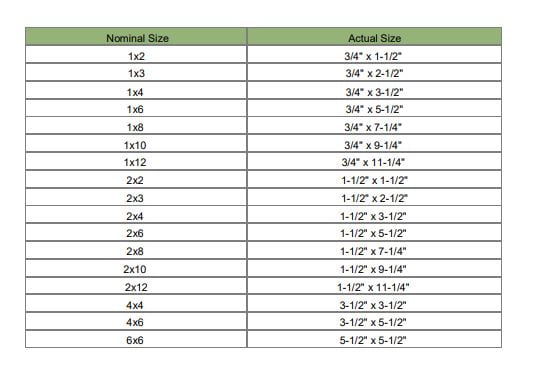
Imperial/Metric Conversion Chart
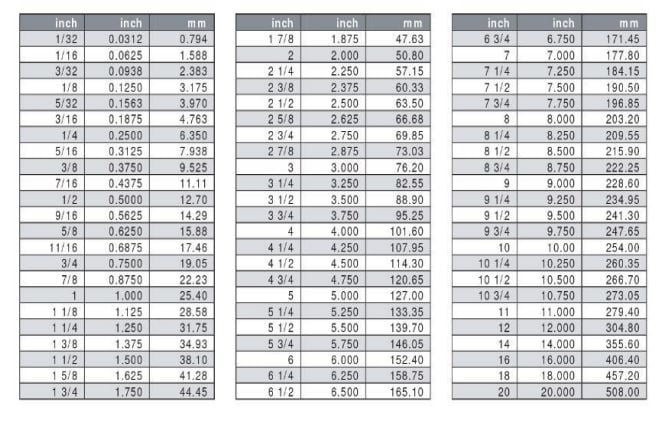
Important Notes:
Use a countersink drill bit to pre-drill ALL holes before inserting screws to avoid splitting the wood and make the screw heads sit flush with the wood.
There may be slight differences in the path of the screws to avoid encountering two screws that are close together.
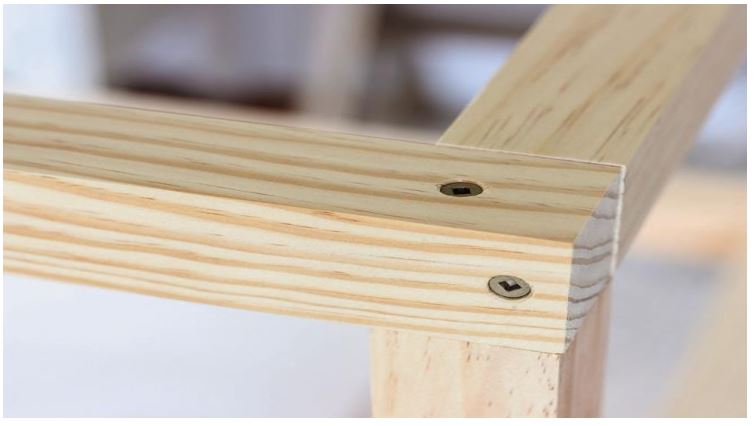
Before you put the screw on the tip of the drill while doing the screwing operations, you should make a circle on the top of the wood for the screw entry by drawing a circle with the drill bit itself. If you do this, the piece of wood will not crack.



Tips:
To screw any wood screw without damaging the wood, you can heat the screw with a lighter for 4-5 seconds and then screw it in.
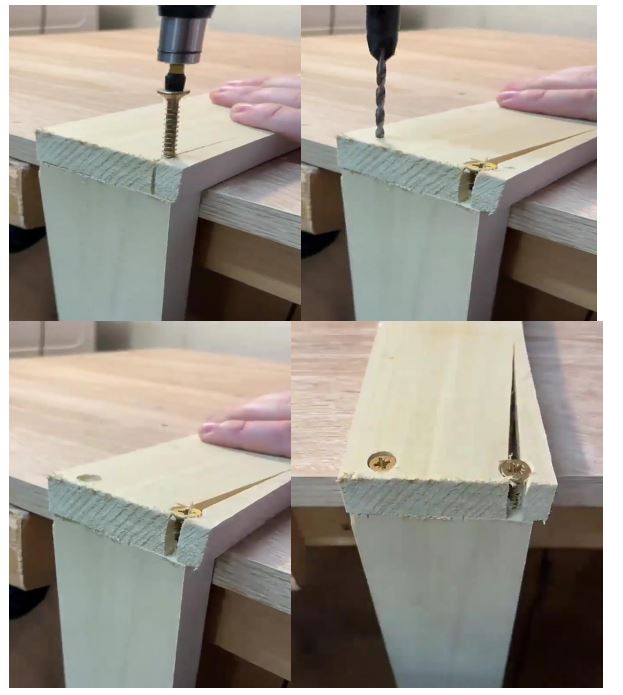
Instead of screwing directly as shown in the picture, it is a much better method to first insert a wood drill rod into the tip of the drill and drill a screw hole by drilling the wood.
Then you can do the screwing process without damaging the wood.
Wood painting information:
First, sand the wood with 150 grit or higher sandpaper to achieve a smooth, even surface before staining.
Thoroughly remove all dust from the wood by using a vacuum with a hose attachment, then wipe clean with a damp cloth.
Then wiping clean with a damp cloth. First, apply Pre-Stain Wood Conditioner to the boards.
Apply the Pre-Stain Wood Conditioner and allow it to penetrate the wood for just 1-5 minutes, then remove excess conditioner that has not soaked into the wood with a clean rag Apply Water Based Wood Stain to all of the wood.
You can the color Desert Sand mixed for all boards and the color Pure White. What I love about the water-based stain is
1) how easy clean-up is…
2) how little odor the stain has…
3) the colors.
You can get everything from bold, colorful shades to neutral wood tones to light, creamy cottage and ocean-inspired stains.
Apply the stain using a foam brush, and allow it to penetrate the wood no longer than 3 minutes.
It is very fast-drying, so work in small sections! Wipe the wood with a clean cloth to remove any stain that has not soaked into the wood.
Allow the stain to dry 24 hours before applying a protective finish.
Tip: It will be easier to wear a pair of gloves while wiping the excess stain to keep our hands clean than to wash our hands.
After the stain has dried 24 hours, apply a thin coat of Water Based Polycrylic (I used the clear matte finish) using a brush.
Allow to dry at least 2 hours, then sand with a very fine 220 grit sandpaper and remove all dust.
Apply a second and third coat, drying and sanding in between each layer.
The wood will need 3 hours to dry before handling and 24 hours before it will be fully cured.
If you've ever used polyurethane on top of white paint and seen the yellow stains that appeared once the poly dried, you know how important it is to make sure you're using the right topcoat.
General Dimensions:
Side View:
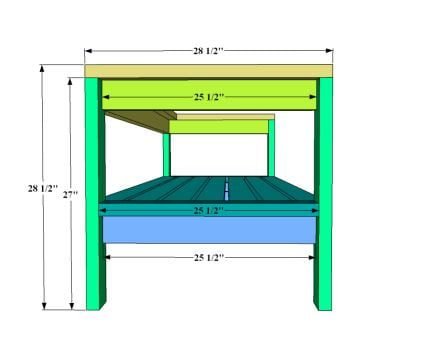
Front View:

Top View:
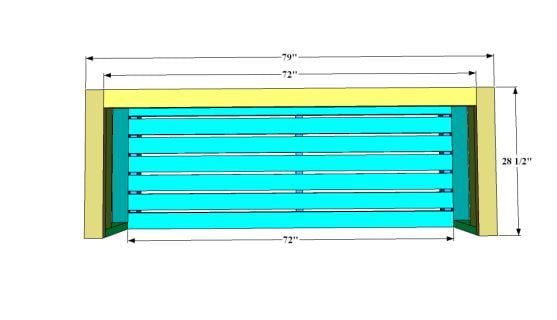
Back View:
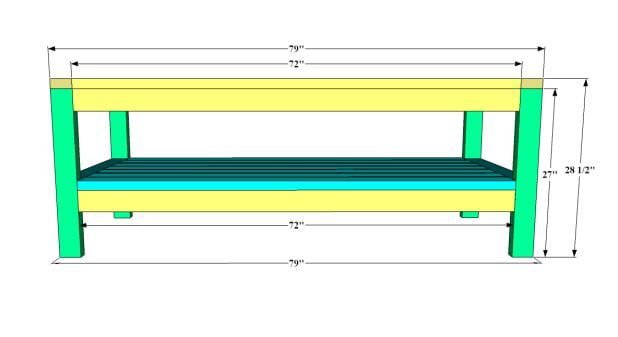
Assembly Process:
Step 1:
First we measure and mark 7 1/2'' from the bottom of the A1 feet to the top.
Then, just above the marked place, we place the B1 piece as in the picture and paste it.
Then we place the C1 piece horizontally just above the B1 piece and glue it.
After the drying process is completed, we stick the other A1 foot on the ends of the B1 and C1 parts in the same way.
We are screwing from the outside of both feet as in the picture.
We use 2 1/2" screws here.
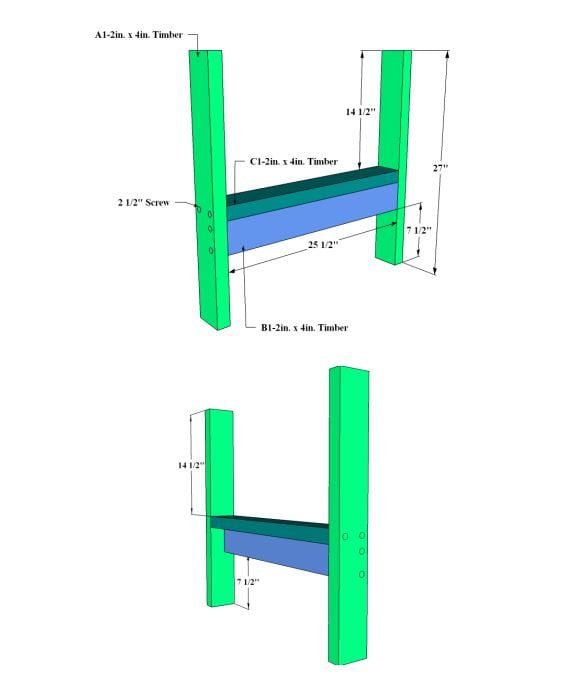
Step 2:
Now we glue the second piece of B1 on top of the first one, and after the wood glue dries, we screw it as in the picture.
It is important that the screwings are frequent and numerous in order to be strong.

Step 3:
Now we stick the E1 piece on top of the A1 legs so that it coincides with the right and left ends and screw it from the top.
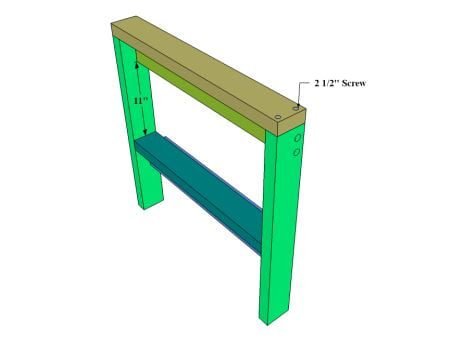
Then we place the D1 piece under the E1 piece as in the picture and screw it from the sides.
When screwing in from the sides, it is good to leave some space so that the top screw does not overlap with the previous screw.

Now we have completed the first leg, and now we are making the second leg ready by repeating the operations we have done so far.
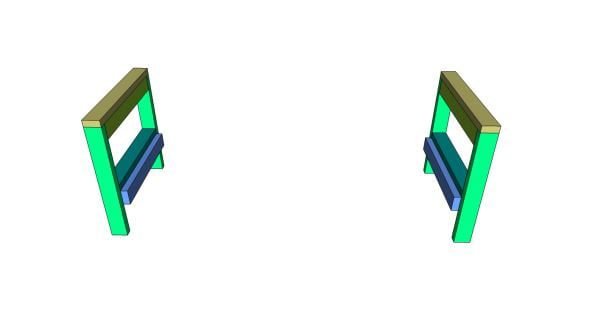
Step 4:
Now we glue the F1 pieces to the front and back ends of the second B1 piece as in the picture.
After drying, we screw it with 2 of 2 1/2" screws from the outside of the F1 parts.
It will make our job easier to put the ends of the F1 pieces on a piece with the same height.
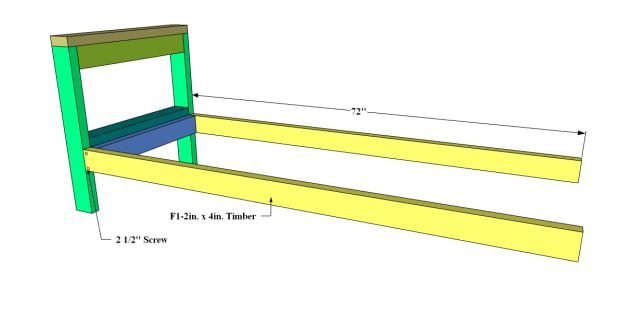
Then, we make one more screwing from the outside of the A1 feet to coincide with the middle of the F1 part to make it more robust.
We use a 5'' screw here and if we heat this screw carefully for 4-5 seconds with a lighter and screw it in, it will prevent it from damaging the wood.

Step 5:
Now we measure and mark a distance of 35 1/4' from the right and left ends of the F1 piece to the inside.
We glue the third piece of B1 to the middle part. After it dries, we screw it from the outside.

Step 6:
Now we place the second leg, which we completed before, between the F1 parts as in the picture.
After drying, we screw it from the outer part of the F1 parts and integrate them with the B1 parts.
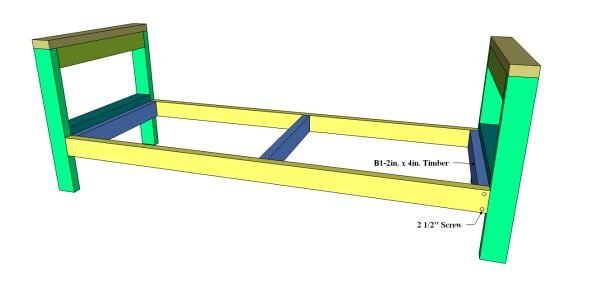
Then, we make one more screwing from the outside of the A1 feet to coincide with the middle of the F1 part to make it more robust.
We use a 5'' screw here and if we heat this screw carefully for 4-5 seconds with a lighter and screw it in, it will prevent it from damaging the wood.
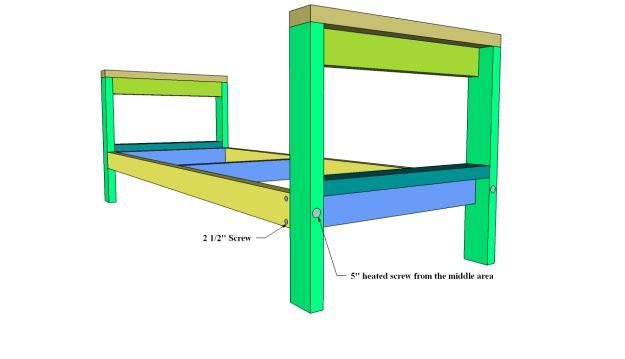
Step 7:
Now, starting from the front or rear end, we place the G1 boards aligned with the outside of the A1 legs and glue them to the junction areas.
Then we place the other G1 boards with a 21/32'' (0.66'') gap between them and glue them completely to the second B1 and middle brace B1 pieces.
After the drying process is completed, we screw it from the right, left and middle parts to the lower B1 parts as in the picture. It would be better to use 2'' screws here.
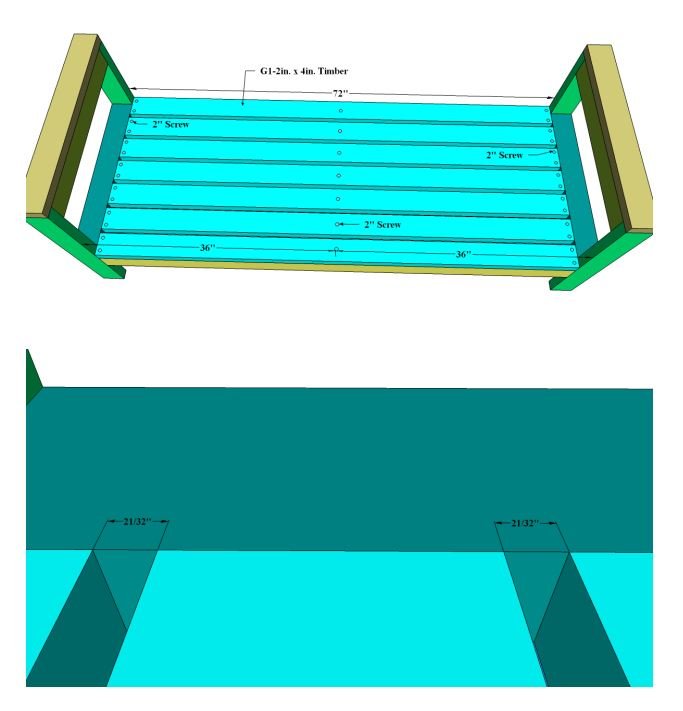
Step 8:
Now we place the F3 piece between the E1 pieces and glue it. After it dries, we screw the E1 piece from the outside as in the picture.
Here we use 5'' screws. To avoid damaging the wood, it will be helpful to heat the screw with a lighter for 3-4 seconds before screwing in.
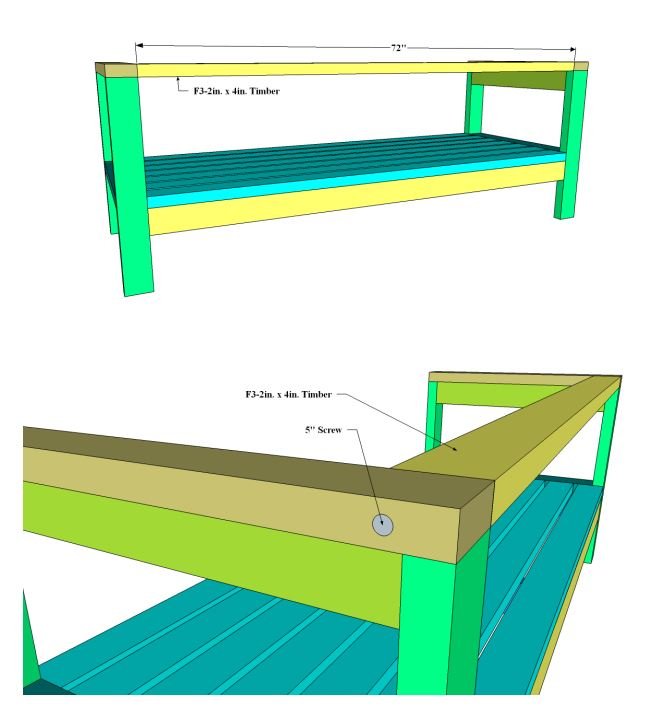
Step 9:
Now we align the F2 pieces under the F3 pieces, place it as in the picture and paste it. After it dries, we screw it from the outside of the F3 part using 5 or more screws as in the picture.
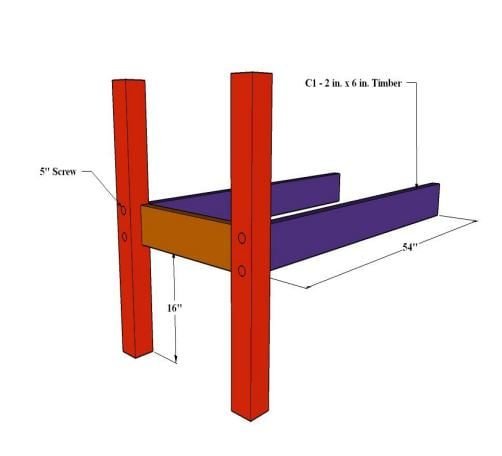
If you wish, you can place the F2 part first. First, we will drill pocket holes from the right and left ends of the F2 piece.
For this, we adjust your Kreg Jig apparatus according to 1 1/2'' wood and open the pocket holes.
Then we place it between the E1 parts and screw it using 2 1/2'' Kreg Jig screws.
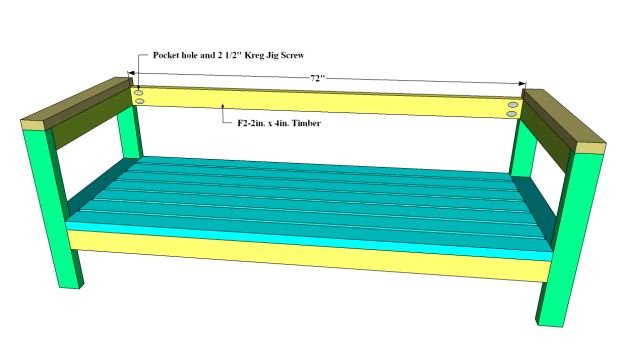
Then we place the upper F3 part as in the picture and screw it to the lower F2 part.
Then we screw it from the outer middle part of the E1 part to the F3 part, as we did in the previous process.

We complete our patio sofa project!


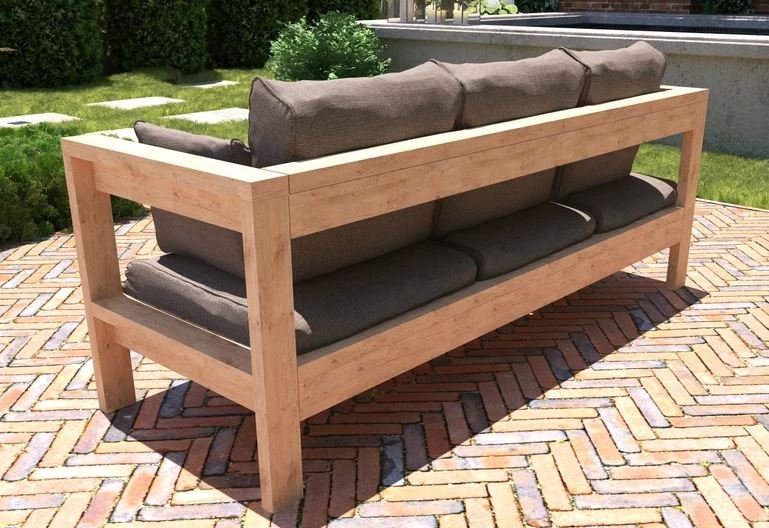
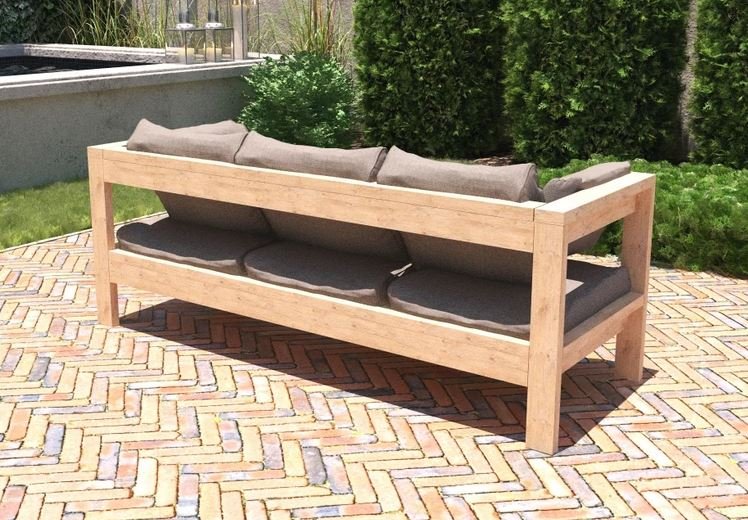
Once the outdoor patio sitting sofa is done, you can make it comfy and cozy by adding cushions, pillows, and blankets.
